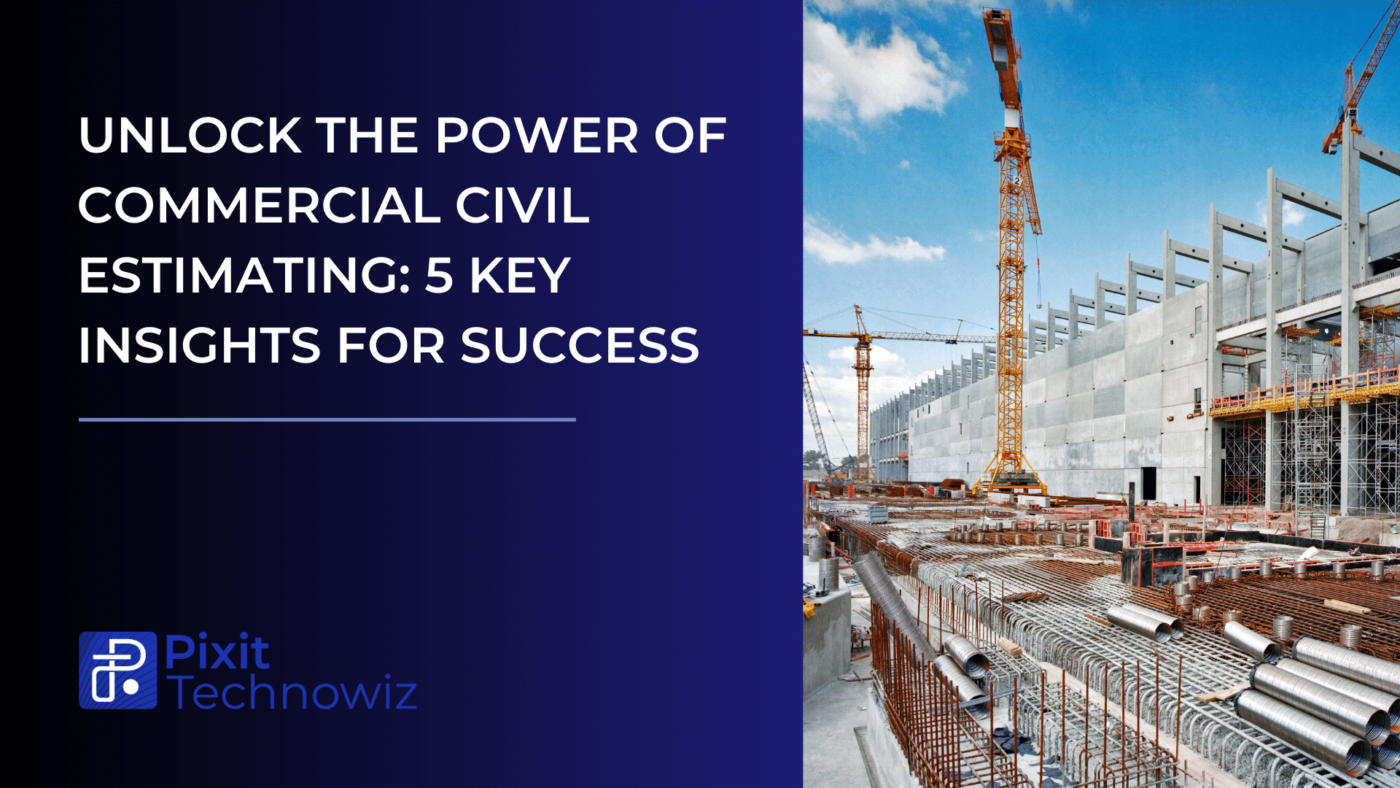Introduction
At the epicenter of the construction industry’s advancement, Commercial Civil Estimating plays a pivotal role, enabling firms to forecast costs with precision, manage resources with dexterity, and steer projects towards triumphant culmination. An exploration of this complex realm offers insights into its vitality and guidance to engineers, project overseers, and all personnel engaged in civil construction. Let’s traverse this world and uncover the essence of Commercial Civil Estimating.
Commercial Civil Estimating: An In-Depth Exploration
Definition and Significance
In the arena of commercial civil engineering projects, Civil commercial estimating represents the detailed enumeration of cost, materials, labor, and time constraints. Surpassing the boundaries of residential undertakings, commercial civil estimating encompasses grand developments such as corporate edifices, shopping precincts, or industrial infrastructures. The process necessitates a meticulous investigation and strategizing, taking into account elements like property procurement, construction mandates, design intricacies, and environmental stipulations. Segregating the project into discrete elements and forecasting the expense for each, civil commercial estimating unveils a thorough financial pathway for the venture. Such methodology guarantees alignment with fiscal limitations and fulfillment of commercial aims, mitigating risks and elevating efficacy. This foundational aspect underpins the project by:
- Anticipating Expenditures: Auguring materials, labor, machinery, and administrative overheads.
- Governing Risks: Scrutinizing latent risks and implementing cautionary strategies.
- Boosting Profitability: Coordinating project aspirations with monetary competence.
- Compliance and Statutes: Certifying conformity to lawful and regulatory obligations.
Approaches and Modalities Engaging in Commercial Civil Estimating, a plethora of methods and techniques comes into play:
- Unit Cost Estimating: This process uses collective cost of an undertaking by segmenting it into isolated components or units. Estimating the cost of each part and multiplying by the quantity required yields an intricate cost view, enhancing budget control and project management.
- Parametric Estimating: Employing historical data, this technique draws parallels between similar past projects, harnessing cost and time variables to infer new project estimations. It capitalizes on prior experience to forecast future ventures.
- Three-Point Estimating: Envisaging cost or time by evaluating three scenarios: the optimal, the pessimistic, and the most likely. This balanced projection aids in preparing for uncertainties.
- Expert Judgment: Leaning on the wisdom of seasoned experts in the field, this approach garners insights from those who have trodden the path, enhancing the reliability of the plan.
Software Implements Utilizing technological marvels like ProEst, PlanSwift, and others ensures a fluid and precise estimating trajectory.
The Horizon and Destiny of Commercial Civil Estimating
A promising future beckons, steered by advancements in AI, Machine Learning, and automation. Acquaintance with these emerging trends is crucial to secure a competitive edge.
Best Practices in Commercial Civil Estimating
- Comprehending the Project Scope: A profound grasp of the project’s scope fortifies alignment between objectives, timelines, and financial limits.
- Ongoing Surveillance and Revisions: Perpetual oversight and estimate adaptations as the project unfolds curtail deviations from the planned course.
- Collaboration and Discourse: Fostering open communication ensures transparency and harmony within the estimating process.
Obstacles and Resolutions
Challenges Predominant challenges include errant data, alterations in scope, and a dearth of proficient staff. Solutions Confronting these impediments necessitates the utilization of resilient tools, standardization of practices, ongoing education, and the enlistment of experts.
Commercial Civil Estimating across Various Industries
- Construction: In construction, Commercial Civil Estimating forms the backbone, ascertaining the viability, sustainability, and profitability of projects.
- Infrastructure Enhancement: It guides the orchestration and governance of vast infrastructure projects, including thoroughfares, overpasses, and airfields.
- Energy Domain: Within the energy sector, it bolsters the evolution and sustenance of energy facilities, including power plants and renewable energy endeavors.
- Environmental Initiatives: Its role is paramount in cost estimation for projects targeting environmental preservation and sustainability.
Conclusion
Commercial Estimation is an indispensable part of the civil construction industry. Understanding its nuances, staying abreast with trends, and adopting best practices can unlock new potentials and drive success in this vibrant field. It’s not just a technical process; it’s an art that balances numbers, resources, and human aspects to create successful projects.
facing issues with optimizing your cost to efficiently generate profit? Look no further, Contact Pixit Technowiz’s experts for the best in industry commercial estimates.

